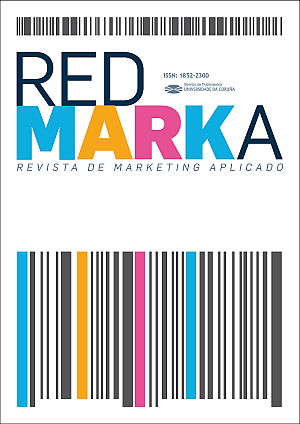On-line corporate communication in the environmental sector: awareness and participation on the internet
Main Article Content
Abstract
The main purpose of this research work is the creation of a model of communication and environmental awareness on the Internet. A Paradigm the descriptors that provide essential building brand via the Internet for the environmental sector, both for businesses with social purposes "green" as for NGOs and Public Administration. The purpose of the model is information, communication, participation and environmental awareness among citizens. The research methodology of this study is based on the content analysis of the theoretical corpus of communication and the Internet, as well as a research based on an analysis of models of brand equity and a study of the state of interactive communications Three organizations (agents sector representatives). As can be seen in the model, each of the marketing strategies and online communication allows enhance benefits of the Internet as a medium for information, communication, participation, education, public awareness.
Keywords:
Downloads
Article Details
References
Alet, J. (2007): Marketing directo e interactivo, Barcelona: ESIC.
Alloza, A. (2001): “Gestión estratégica de la marca” en Informe Anual de la Publicidad y el Corporate en España y Latinoamérica, Madrid: Pirámide.
Bassat, L. (2008): Conferencia de Luis Bassat en “Los Desayunos IAB Spain”, Madrid.
Berners-Lee, T. (2000): Tejiendo la red, Siglo XXI de España. Madrid.
Chaffey, D.; Mayer, R.; Johnston, K.; Ellis-Chadwich, F. (2003): “Internet Marketing. Strategy, Implementation and Practice”, Harlow: Prentice Hall.
Csikszentmihalyi, M. (1998): Creatividad. El fluir y la psicología del descubrimiento y la invención, Barcelona: Paidós.
De Salas, M.I. (2002): La Comunicación empresarial a través de Internet, Valencia: Editorial CEU Cardenal Herrera.
EIAA sobre la Eficacia del Branding Online, http://www.eiaa.net/research/adeffectiveness.asp
Frazer, C. (1983): "Creative Strategy: a management perspective", en Journal of Advertising, vol. 12, n. 4.
Kotler, P., Lane, K. (2006): Dirección de marketing, Madrid: Pearson.
Levine, R.; Locke, C.; Searls D.; y Weinberger, D. (2000): The Cluetrain Manifiesto, Perseus Book.
Moliné, M., (2005): “Reinventando la publicidad” (on line). Artículo disponible en Internet en: http://www.moline-consulting.com/indexreinventando.htm.
Reeves, R. (1964): La realidad en la publicidad, Madrid: Severo-Ochoa.
Ros, V. (2008): “ebranding. Posiciona tu marca en la red”, A Coruña: Editorial netbiblo.
Schmitt, B. H. (2000): Experiential Marketing, Bilbao: Deusto.
Tapscott, D., y Williams A.D. (2007): “Wikinomics. La nueva economía de las multitudes inteligentes”, Barcelona: Paidós Empresa.
Vallet Saavedra, G. (2005): “eBranding. La creación de marca digital en la era de la conectividad”, Director de tesis: José Mª Ricarte, Universidad Autónoma de Barcelona, Departamento de Comunicación Audiovisual y Publicidad.






